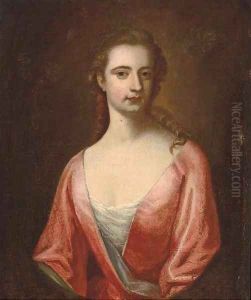Sir Godrey Kneller Paintings
Sir Godfrey Kneller was one of the leading portraitists in England during the late 17th and early 18th centuries. Born Gottfried Kniller in Lübeck, Germany, on August 8, 1646, he moved to England in 1676, where he anglicized his name and established himself as a successful painter. Kneller studied in Amsterdam under Ferdinand Bol, a pupil of Rembrandt, and later in Italy, where he was influenced by the works of Venetian painters.
After settling in England, Kneller quickly became popular among the English aristocracy. His work was characterized by a blend of Dutch realism and Italian baroque styles, which appealed to the tastes of his patrons. He became the principal painter to Charles II and continued to serve under James II, William III, and Queen Anne. Kneller was the first painter to be knighted in England, receiving the honor in 1692.
Kneller's portraits are known for their grandeur and effective use of lighting. He introduced the 'kit-cat' format of portraits, which were smaller than half-length but larger than head-and-shoulders portraits, allowing for more flexibility in displaying the paintings in the smaller rooms of London townhouses. He founded the Kneller Academy of Painting and Drawing in 1711, which was an important institution for the training of artists in Britain at the time.
Kneller's legacy includes the 'Hampton Court Beauties' and the 'Kit-Cat Club' portraits, series that captured the influential figures of his era. He became the leading court painter after the death of Sir Peter Lely, and his studio produced a vast number of portraits, which resulted in a significant impact on English portrait painting. Kneller died on October 19, 1723, in London, leaving behind a body of work that has been celebrated for its impact on British portraiture. His style influenced many succeeding generations of portrait painters.
